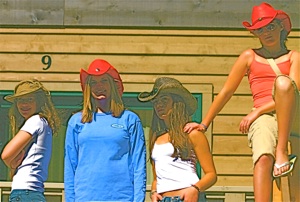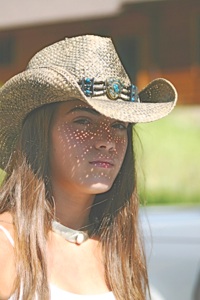WHY TEENS NEED EDGY FICTION
Presented at ALAN, November 2003
I write dark and edgy fiction and sometimes the question arises—why? What is the need to uncover and peer to the dangerous recesses of human behavior for our teens? Is it necessary?
I, obviously, think it is.
Once, I either read or heard--I was wool gathering and I haven’t a clue where I got this—but it was something like-- teens have no place in their brain for predicting a future consequence—for themselves. After I came out of my fog, I began using this idea in teaching. When a student did something that brought him or her onto my-- you don’t want to be here-- radar screen, I would ask “What did you think would happen?” If the student had a fight with another student the “puncher” thought the other person would “get theirs” meaning that the “punchee” would end up bleeding. But when I asked “What did you think would happen to you? I always got the same answer. Always. “I don’t know.”
Maybe that’s one of the defining issues that separate teens from adults: the ability to see and appreciate the future consequences of one’s actions. A teen will time and again embark upon a course of action without much if any thought to what exactly will happen to him or her as a result.
There are some common dark urges in teens. Rage against teachers, parents other students. Suicide. And there are dark and edgy books that address those issues.
In the classic, KILLING MR. GRIFFIN, a harsh, by-the-book-teacher is kidnapped and subsequently dies.
MARTYN PIG by Kevin Brooks—Martyn accidentally kills his non-lamented father and covers up the crime.
And in my own SHATTERING GLASS four boys beat a schoolmate to death.
One common thing these books share—a stray thought or two might have been tossed in the direction of future outcome—the consequences the teens in these books saw were unrealistic at best. And they had no adult guide.
I think our edgy YA writers are serving today’s teens a bit like the Brother’s Grimm served generations of younger readers. We show our readers the dark woods in hope that they won’t venture into them.
The teen years can be wonderful. So much happens in such a short span. But that also makes it confusing; a whirlwind of change and change is sometimes frightening, especially if one doesn’t have a guide. There are many paths and a few lead into dark, dangerous places and some of those places are one-way trails.
Many teens want to wander down those trails they long to look into the abyss. And dark and edgy books are a wonderful safety valve. These books are a way to peer into that abyss without actually standing on the edge and taking the chance of toppling over. One big step removed. I want teens to see that the abyss is dark, it is frightening and it is much too permanent—choose another path.
I don’t want YA fiction to be moralistic. I don’t want a YA book to be a cautionary tale. I do want the reader to live their darkness in fiction, to get the rage out, and to suffer the consequences on the page. The reader can work through natural teen confusion, despair, rage, and pain, but allow the character to walk in the dark woods, let the character commit the violence, and let the reader suffer the character’s consequences vicariously.









